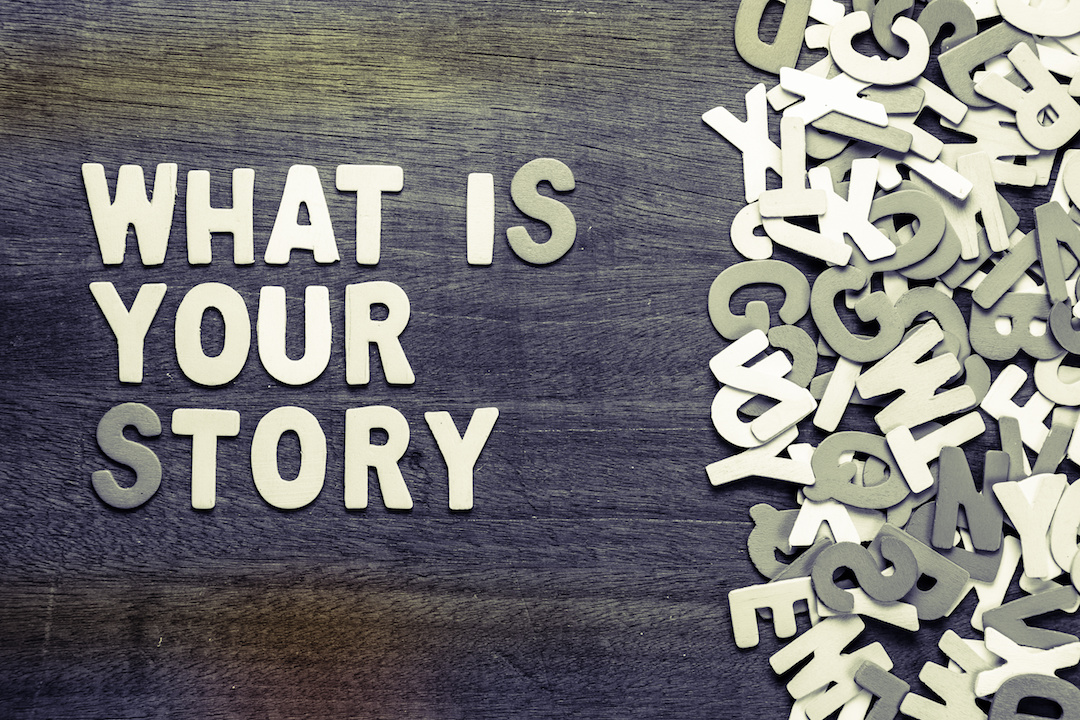 The terms “brand” and “product” are often used interchangeably. This is especially true in the supply and distribution chain where branded products are moved along until they finally get to the consumers, usually on a retail store shelf. You will often hear consumer brand builders say they are “promoting the sale of their products” or “putting their products on special.” This can be confusing to outsiders.
The terms “brand” and “product” are often used interchangeably. This is especially true in the supply and distribution chain where branded products are moved along until they finally get to the consumers, usually on a retail store shelf. You will often hear consumer brand builders say they are “promoting the sale of their products” or “putting their products on special.” This can be confusing to outsiders.
We like to use the term “branded products” to distinguish between generic products and those produced and sold under a commercial brand. A brand is the logo, label, image, positioning, promise, and overall reputation, whereas the product is the item offered for sale. Generic products without brand names are often sold in bulk. However, once that product is identified with a brand, the product’s performance, the customer experience, and the customer expectations all reflect on the brand’s image, promise, and reputation.
Branding a physical product, therefore, is submitting your brand building success to the realities of product handling, quality, service, and availability. If any of those factors are compromised, your brand is compromised. Your company image is inseparable from your branded product. Because it is through your product that consumers know your company, your company’s reputation can also be compromised. This is why it’s impossible to build a retail consumer product brand without looking at the big picture.
The best logo, label, packaging, color scheme, and marketing materials all fail if they are not designed specifically for the harsh and demanding retail environment. The best positioning, pricing, product quality, endorsements, and accolades all fail if your branded product is out of stock! Unlike personal branding, physical product branding is dependent on the physical realities of the marketplace.
When a generic product is out of stock, the consumer holds the retailer responsible. When a branded product is out of stock the consumer holds the brand responsible. Now your brand is “undependable!” Interestingly, your marketing people may say that inventory and retailer supply chain management is not their job. But any successful marketing program should take management of this process seriously since it can quickly undo their best conceived plans and programs.
Once you realize that the fundamental difference between a product and a brand is responsibility, you have to ask, “responsibility for what?”
Responsibility for Getting It There
 For all intents and purposes, your physical retail brand doesn’t exist unless it’s in a physical market. It can, for instance, be in one market and well-known, but nonexistent in another. Sure, you can sell it on the Internet and have a wonderful website that tells all about it. But when people want to buy it, 90% still want to buy it in bricks and mortar stores. They prefer the convenience, security, consolidation, and efficiency of making one trip to the store to buy 10 to 50 items, yours hopefully being one of them.
For all intents and purposes, your physical retail brand doesn’t exist unless it’s in a physical market. It can, for instance, be in one market and well-known, but nonexistent in another. Sure, you can sell it on the Internet and have a wonderful website that tells all about it. But when people want to buy it, 90% still want to buy it in bricks and mortar stores. They prefer the convenience, security, consolidation, and efficiency of making one trip to the store to buy 10 to 50 items, yours hopefully being one of them.
Internet marketing is a great way to educate your consumer about the value of your branded products but ultimately, they want to know where to buy it. You can sell it online, but those sales are one at a time and you’re not going to get impulse buys, discoveries, notion buys, quantity purchases, or tactile comparison to other products online. You’re not going to get brand-building displays. You’re not going to get one big check from one big box store with 200 outlets at a time. So, for the time being, we’re back to old-fashioned bricks and mortar stores and building your brand by achieving placements in those stores.
If it’s not there, they can’t buy it! This means you as the brand builder are responsible for understanding and executing a complex distribution system where every level has its own particular interest that has very little to do with your product’s quality or price, but everything to do with your ability to help them improve their strategic position, assist them in their work, and sell it for them.
This includes, but is not limited to, inventory management, sales support, initial sales presentations, procuring and delivering customers, and tireless vigilance to make sure that the behavior of others in the system does not reflect negatively on your brand. Most marketing people think this is solely the salesperson’s responsibility, yet their marketing materials and plans must be designed to access every level of the market, not just the ultimate consumer.
Responsibility for Customer Service
The consumer holds your brand responsible for every aspect of customer experience with your branded product. This is why we advise our clients who are building consumer brands to start small, make their mistakes in a limited area, and get their act together before they take their show on the road. One of the biggest discoveries they will make is the cost of sales – not the cost of goods, but the cost of sales. These include, but are not limited to, replacements, refunds, and keeping adequate inventory at the retail and wholesale distribution levels. These also include the maintenance and growth of positive and ongoing relationships at every level.
The biggest mistake consumer brand builders make is they expand too quickly into too many new markets over too wide of a territory. They simply can’t provide the customer service necessary to all the stakeholders in the distribution chain, and so their brand gets a bad reputation. It’s a hard pill to swallow, but you’re better off not being there than being there and failing. As long as you’re not in the store, you cannot be discontinued from the store! As long as you’re not in a chain store outlet you can’t be discontinued from the entire chain because of your poor performance in that outlet.
Some inexperienced brand builders celebrate gaining access to a major chain or box store. They shouldn’t be celebrating if they can’t support what they’ve sold. They certainly shouldn’t be celebrating if they don’t know and understand the nature and extent of that support and what the implications are if it’s not delivered in a timely and correct fashion. You may have gotten into the chain, but can you stay in the chain?
Many brand builders think they are in the product business, but they are in the customer service business. Once they are given precious shelf space, they must take responsibility for the actions of everyone who is responsible for getting their product on that shelf.
Responsibility for Quality Control
Some product producers think that quality control ends with packaging. But responsibility for quality control goes far beyond the manufacturing process. As an example, we once were held responsible for product that was picked up by our buyer at our warehouse. The buyer’s contracted trucker mishandled the product in route by failing to maintain proper temperature control.
The result was that our products were spoiled when they arrived at the buyer’s warehouse. Technically, it was the buyer’s fault, but our brand was blamed by the buyer and consumers who bought our product from that buyer. We not only picked up the spoiled products and replaced them at our own expense, but we learned we had to expand our concept of quality control to the buyer’s shipper in order to protect our brand’s reputation.
We also discovered the hard way that it wasn’t enough to demand quality from any outsourced producers including, but not limited to, product producers, packagers, handlers, and printers. We also had to have our person on their production line on the day that our order was produced. We had to actually make it part of our contracts that our person could stop production any time our person saw a quality control glitch.
When we started, our outsourced contracts were three pages long. When we finally sold our business, our contracts were over 30 pages long. That’s how many new clauses we had to add to protect our quality control. We had to specify metrics, standards, compositions, and tolerances in extended detail to protect our quality. And, we needed our own quality control person on our contracted service’s production line.
Your brand is blamed by your buyers and consumers for any glitches in quality control no matter whose fault it may be. Only you are responsible for protecting your brand’s reputation.
Responsibility for Pricing
Brand builders want to position their products within price points and categories that will be the best market fits for their offerings. This is a constant challenge. We often found retail pricing on our product that was so high that our products weren’t moving. Why? Because the retailer thought they could charge more. We were new and not yet in the chains so our price was not yet established.
But even though we took their percentage on sale into consideration, and even though we took the distributors percentage on sale into consideration so we could facilitate and encourage a velocity price point, some retailers decided to try to make more profit on our products because they were unknown. This is a big challenge that new brand builders especially face.
We also had retailers who were purchasing our product from distributors and then offered that product for less than anyone else (and even at a loss) through their webpage. This became instant public knowledge and caused our other retailers to threaten to discontinue our products since they could no longer compete at the margins they were accustomed to. Once again, the brand was blamed for the pricing behavior of the retailers. In the eyes of the competing retailers, we were to blame.
The brand builder is responsible for achieving the ideal price at retail even though it can be completely out of their hands.
Responsibility for Meeting Expectations
Your consumers own your brand. You are but the brand steward. Your consumers also own your brand promise. As much as you try to influence your brand promise through marketing, it is your consumer’s personal experience with your brand over time that builds their expectations about the behavior, quality, and dependability of your brand.
When your production and finance people try to justify cheapening your product by showing you how much you will make at your current volume and current growth rate, ask them if they expect the volume and growth to remain the same with a cheaper product. Your customers will notice the difference and start shopping for an alternative. Don’t buy into this brand-killing math.
When your marketing people tell you it’s time for a change, time to reposition, or time to rebrand, watch out! Your consumers have learned how to spot your brand in the mass of brands vying for their attention in your category. It may have taken them years to recognize your logo, label, packaging, and location in the store. Any radical changes will hurt your brand because consumers will be confused. Proceed with caution! When it comes to any changes to the appearance of your branded products, embrace evolution not revolution.
Find out what your consumers’ expectations are about your brand. You may be surprised to discover they are different than what your marketing people have been promoting.
Responsibility for Distribution
Your brand equity with any consumer retail product is based to a large degree on your distribution. In other words, “How far and wide can your brand be purchased?” As mentioned before, expanding your brand into new territories is expensive and dangerous. You must manage what you sell in every new territory. If you don’t, your brand’s reputation will suffer.
When we started marketing our brand, we got many complaints from consumers who said they couldn’t find our product anywhere. They said it was “hard to get.” We were unable to get distribution in some territories to service retailers who wanted to carry our brands. You guessed it, our consumers blamed our brand.
Even when we finally achieved good distribution to a new territory, we had to make most of the sales for our distributors. It was all we could do to get their salespeople to pick up the reorders. Our people had to watch our retailer’s shelf space like a hawk to make sure reorders were submitted before we ran out on the shelf and a competitor took our space.
It’s the brand builder’s responsibility to gain and maintain distribution in every territory.
Responsibility for Company Behavior
Even if you do everything right, including initial placement, great customer service, excellent quality control, attractive pricing, and a distribution management system that runs like a Swiss clock, your brand can still be undone by the behavior of your company.
Today’s consumers know they are voting with their purchases. When they buy your brand they are voting for your policies and practices toward employees, the community, and the environment. If your company gets any negative press in these areas, it can affect the sales of your branded products.
Your consumers want to buy products from a company that identifies with their values regarding health and fair play. They will blame your brand for any negative behavior on the part of your company.
Unlike unbranded generic products, with branded consumer products, your consumers hold you, the brand builder, responsible! You are your product!


